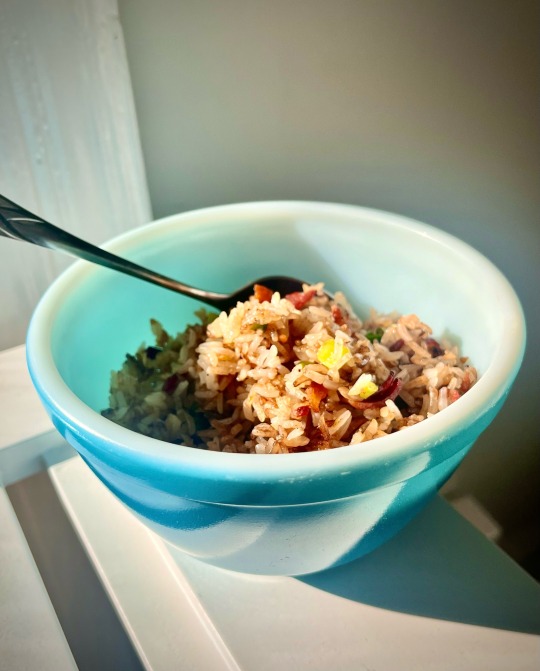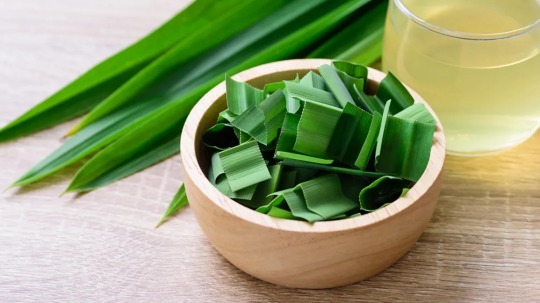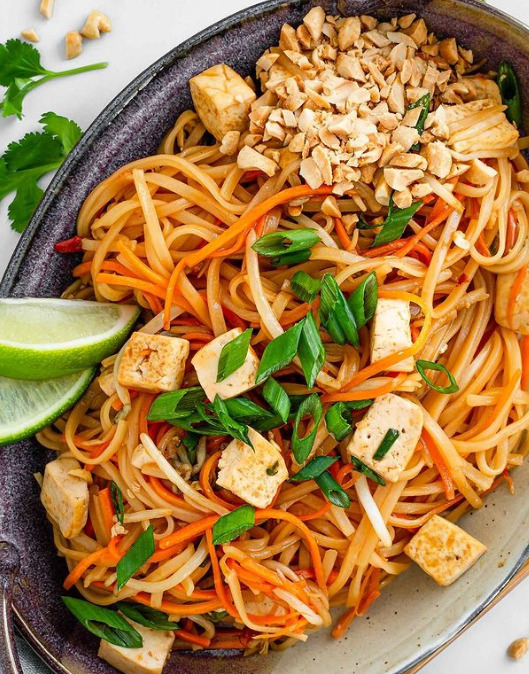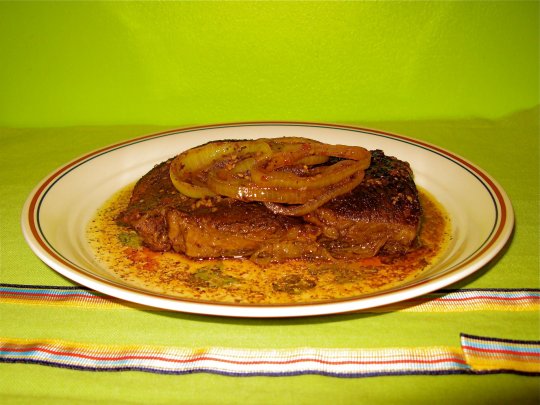#asian cooking
Text

Black Peppercorn Beef Stew
Think of this dish as a tribute to the undervalued but frequently used spice, black peppercorn. The beef is marinated in yogurt, ginger, garlic, and freshly ground pepper before being seared all over to create a deep, rich flavor for the stew. After that, the liquid is reduced to a thick, rich sauce and the vegetables are cooked until soft. This stew, which takes its cues from Indian cooking, is cooked with garam masala powder, which harnesses the potency of spices like cumin, bay leaves, cloves, and cinnamon to produce a flavorful, complex dish. Add the red bell peppers and zucchini last for a colorful finish. Accompany with warm rice.
“There are people in the world so hungry, that God cannot appear to them except in the form of bread.”
― Mahatma Gandhi
#food#asian cooking#indian cuisine#beef dishes#stew#beef stew#home cooking#home cooked meal#homemade#my photography#food photography#original photography#thelcsdaily#black peppercorns#garam masala
217 notes
·
View notes
Text

Bacon fried rice with garlic and scallions.
#fried rice#bacon#cooking at home#food#cooking#food photography#foodpics#food blog#foodie#joy#rice#asian cooking
5 notes
·
View notes
Text
Tonight’s special


Firecracker 🧨 hotdog 🌭 fried rice 🍚
#food#foodblogger#foodgawker#foodpost#foodpics#foodgram#home cooking#cooking#dinner#fried rice#rice#vegetables#egg#asian food#asian cooking#asian cuisine#fusion cuisine#fusion food#fusion cooking#hot dog#peanuts#onions#green onions#mushrooms#carrots#spicy#spicy food
11 notes
·
View notes
Text

Pandan Gin Sour
~~~~~
Recipe:
1.5 oz Gin
1 oz Blanc Vermouth
1 oz Lime Juice
1 oz Pandan Coconut Orgeat
1 Dash Orange Bitters (Optional)

Combine ingredients into cocktail shaker with two large cubes of ice, one cracked and one whole. Shake for 12 (twelve) to 15 (fifteen) seconds to combine. Double strain into a coupe style glass of your choosing and garnish the rim with a wheel of lime.
Pandan Coconut Orgeat:
2 cups white sugar
1 1/4 cup almond milk (unsweetened and unflavored)
1/3 cup Pandan powder (no sugar added)
1 1/2 tbsp coconut extract
1/2 tbsp almond extract
Combine the ingredients into a medium saucepan and stir together over very low heat. Bring gently up to a simmer and allow the mixture to sit until the sugar is completely dissolved. Do not bring the mixture up to a full boil, as the Pandan powder will cause it to foam up substantially, as can happen with other syrups like honey syrup. Once homogenous, bottle in an air-tight, sterilized bottle and keep in the fridge.
~~~~~
What is Pandan?
Every so often, I come behind my bar to play around with a completely new foreign flavor. In this case, this cocktail is the product of my fascination with Pandan.
Pandan is a tropical grass found throughout Asia, and is commonly used as a mean to flavor local cuisines.

The flavor of Pandan is quite like a combination of vanilla and coconut, contextualized by the grass-like nature of the plant and the resulting flavor that produces.
It’s delightfully light and complex, especially compared to products that attempted to emulate its component flavors like commercial syrups.
I was introduced to Pandan through a local Asian deli called “Cravings Deli” in Portage, MI. Nestled inside the Pacific Rim Asian food market, this little spot serves up delicious food and boba tea, for which one is the flavors is Pandan and black syrup.
I get that exact order every single time, and it is always amazing.
Since being introduced to this flavor, I elected to utilize it in the context of cocktails by making the above mentioned syrup.
~~~~~
The Pandan Sour is very light and citrusy, but doesn’t lack backbone.
The primary sweetener being a modified orgeat gives the drink the necessary “bass notes” that allow the flavor to pop as it rolls across your tongue.
This low, sweet flavor of the Pandan syrup is cut by bright citrus and given evolution by the herbal notes of the blanc vermouth. I used Dolin Blanc while developing this recipe and it worked phenomenally, though a more robust Blanc vermouth might fair better.
The botanicals of the gin give this melange of flavors a common partner off of which to express themselves, and all told the cocktail that results is deeply smile inducing and pleasant.
#cocktails#mixology#recipes#drinks#liquor#syrups#orgeat#Pandan#Asian#Asian cooking#Asian mixology#Asian flavors#gin#gin sour#gin cocktails#booze#lime#vermouth#vermouth cocktails#elevated cocktails#Spotify
7 notes
·
View notes
Text
Illustrator Linda Yi’s recipe for “smacked cucumber,” a classic summertime Chinese snack, is more than a list of ingredients and instructions. It’s a full-color comic strip, complete with speech bubbles offering supportive cooking advice, sound effects (“SMACK!”) and a cat and panda beating up a cucumber.
When it comes to telling stories about food, “there’s so much that you can do with both words and pictures,” Yi says. Across North America, a generation of Asian cartoonists have come to the same conclusion. The last decade has seen a flurry of illustrated Korean cookbooks, one-panel satirical comics about South Asian chai, and graphic novels about Japanese-American culinary history. No matter the focus, each cartoon offers vivid depictions of the artists’ beloved foods.
Asian culinary comics in North America go back at least to the late 1970s, when Vietnamese-Canadian artist Thach Bui and chef Bill Lombardo created the nationally syndicated, decades-long comic strip Cheap Thrills Cuisine, in which a character named Chef Peppi walked readers through recipes inspired by Toronto’s Asian and other immigrant communities.
THE GASTRO OBSCURA BOOK
Taste the World!
An eye-opening journey through the history, culture, and places of the culinary world. Order Now

Culinary comics are a natural result of the Asian diaspora’s devotion to both food and visual storytelling, says Taiwanese-American writer Jeff Yang, the editor of multiple anthologies of Asian-American comics. In the United States, Asians-Americans are better represented in the world of comics and graphic novels than they are in almost any other major storytelling industry. “A part of our cultural heritage may make us more inclined to see words and pictures as being a little bit more blurred together,” Yang says, citing pictorial Chinese characters, South Asian calligraphy, and Japanese manga comics. And when it comes to visual storytelling, images of food are inevitable, he says. “Food as a way of showing love or respect or caring is so deeply embedded in every one of our Asian ethnic cultures that if we want to tell a story, especially a personal story…food becomes a critical lens.”

The art of Yi and Nakahira is a sharp departure from the negative stereotypes of Asian food that have long circulated in American and Canadian culture. “Food slurs are so common as frames for us. [They call us] dog eaters, right?” Yang says. Cartoonists reframe the food of Asian immigrants in a familiar, positive light, he says. “We have yet to be in the world of scratch-and-sniff storytelling,” but with visuals, he says “we can show people what [our food] looks like.”

Perhaps the most radical thing about these culinary comics is that they provide a space for Asian artists and readers to be themselves. Many offer glimpses into artists’ personal lives: the warmth of cooking with a parent; or the joy of eating with a partner. In Korean American Cooking Comics, illustrators and partners Sung Yoon Choi and Eric Watkins pair recipes with humorous panels depicting their domestic life, such as a recipe for a Pepsi float alongside a cartoon of Choi and Watkins binging on potato chips, or a recipe for o jing u cho mu chim, tangy spicy squid, alongside the two of them fishing in a boat, waiting for a bite.

Yi, who began drawing her Panda Cub Stories comics during the COVID-19 pandemic to satisfy a longing for her family’s Sichuanese cooking, says that drawing allows her to vividly express the feeling of a tingling tastebud or the image of a sizzling clove of garlic. With text alone, she might struggle to portray Sichuan’s famous mouth-numbing ma flavor, but she can get the point across by drawing a mouth with “little stars, tap dancing across your lips and tongue,” she says. Plus, she noted that drawing out her parent’s recipes has helped her master difficult recipes, which her ADHD used to prevent her from doing. Illustrated ingredients, dramatized cooking steps, and cute animal narrators have helped her and many others learn to cook complicated dishes such as mapo tofu.
Most of all, Yi says, her comics are an accessible, fun way to share her love of Sichuanese culture with her readers.Many of her fellow creators are similarly motivated, she believes. “Part of it,” she says, “is our generation returning to the foods that we grew up with—and, sometimes we’re ashamed of—and then being like, no, these are beautiful.” Her art, a delicious collage of drawings and words, speaks for itself.
Gastro Obscura covers the world’s most wondrous food and drink.
Sign up for our email, delivered twice a week.
#asian cooking#food#cooking#recipes#asian food#The Delicious Universe of Asian Culinary Comics#cookbooks#asian cookbooks in comic book form
6 notes
·
View notes
Photo

Homemade Pad Thai 😍😋
by: tastythriftytimely
#pad thai#padthai#noodles#tofu#recipe ideas#recipes#thai food#asian food#asian cooking#asian vegan recipes#plant based#plantbased#plant based recipes#plantbasedrecipe#dinner#dinner ideas#foodie#food#food porn
14 notes
·
View notes
Quote
Maybe it’s the way I’ve grown up eating with chopsticks, there are some foods that are just a more pleasant experience when I eat with chopsticks.
#chopsticks
5 notes
·
View notes
Text
Cooking up the dressing for one of my favorite salads. The base is rice vinegar and water, with fish sauce, lemongrass, ginger, galangal, lime leaf, bird's eye chilli, s&p, pinch of sugar, and fresh lime juice.
I simmer it for a half hour, strain it, and then essentially blanch thinly cut beef in it.
Beef and vermicelli salad can't be beat with hot weather like this.
6 notes
·
View notes
Text
Uncle Roger Found THE WORST PHO (Rachael Ray)
youtube
#vietnamese culture#vietnamese cuisine#vietnamese food#vietnam#vietnamese#asian cooking#asian food#beef#meal#meat#noodles#food mention#food#uncle roger#Youtube#rachel ray#chefstable#chef#comedy#funny#funny videos#lifestyle#culture#creative#asian culture#shitpost#tv series#tv show#healthy food#healthy food recipes
3 notes
·
View notes
Photo




AAPI Heritage Month: Cookbooks to Check Out
The Honeysuckle Cookbook: 100 Healthy, Feel-Good Recipes to Live Deliciously by Dzung Lewis
The Honeysuckle Cookbook is stuffed with exciting ideas for easy, approachable, Asian-influenced cooking at home. With 100 recipes, from the breakfast favorites that consistently rate the highest in views on the author's popular YouTube channel (like her Overnight Oats, 6 Ways) to original twists on one-pan and pressure-cooker meals, this book is for those of us who want feel-good meals made healthy, delicious, and quick.
Dzung's recipes take the familiar and turns it ever-so-slightly on its head: Marinara sauce gets extra umami with the addition of fish sauce, while mac and cheese becomes more than an out-of-the-box staple when made fresh with kimchi. Lattes get an extra kick from bold Vietnamese coffee and sweet, floral lavender, and quinoa pilaf is mixed with a creamy curry-miso dressing. Dzung also teaches readers how to stretch groceries so they spend a little less money, how to plan meals seasonally, and how to match main courses with sides so plates look impressive and taste great. With quick snack ideas, recipe hacks, foolproof instructions, and genius tips for pretty presentation, The Honeysuckle Cookbook will be the friendly hand busy young cooks need to hold in the kitchen.
Cook Real Hawai'i: A Cookbook by Sheldon Simeon, Garrett Snyder
The story of Hawaiian cooking, by a two-time Top Chef finalist and Fan Favorite, through 100 recipes that embody the beautiful cross-cultural exchange of the islands.
Even when he was winning accolades and adulation for his cooking, two-time Top Chef finalist Sheldon Simeon decided to drop what he thought he was supposed to cook as a chef. He dedicated himself instead to the local Hawai‘i food that feeds his ‘ohana—his family and neighbors. With uncomplicated, flavor-forward recipes, he shows us the many cultures that have come to create the cuisine of his beloved home: the native Hawaiian traditions, Japanese influences, Chinese cooking techniques, and dynamic Korean, Portuguese, and Filipino flavors that are closest to his heart.
Through stunning photography, poignant stories, and dishes like wok-fried poke, pork dumplings made with biscuit dough, crispy cauliflower katsu, and charred huli-huli chicken slicked with a sweet-savory butter glaze, Cook Real Hawai‘i will bring a true taste of the cookouts, homes, and iconic mom and pop shops of Hawai‘i into your kitchen.
Filipinx: Heritage Recipes from the Diaspora by Angela Dimayuga, Ligaya Mishan, Alex Lau (Photographs)
Filipinx offers 100 deeply personal recipes—many of them dishes that define home for Angela Dimayuga and the more than four million people of Filipino descent in the United States. The book tells the story of how Dimayuga grew up in an immigrant family in northern California, trained in restaurant kitchens in New York City—learning to make everything from bistro fare to Asian-American cuisine—then returned to her roots, discovering in her family’s home cooking the same intense attention to detail and technique she’d found in fine dining.
In this book, Dimayuga puts a fresh spin on classics: adobo, perhaps the Filipino dish best known outside the Philippines, is traditionally built on a trinity of soy sauce, vinegar, and garlic—all pantry staples—but add coconut milk, vinegar, and oil, and it turns lush and silky; ribeye steaks bring extra richness to bistek, gilded with butter and a bright splash of lemon and orange juice. These are the punches of flavor and inspired recipes that home cooks have been longing for.
A modern, welcoming resource for this essential cuisine, Filipinx shares exciting and approachable recipes everyone will wholeheartedly embrace in their own kitchens.
My Shanghai: Recipes and Stories from a City on the Water by Betty Liu
Filled with galleries, museums, and gleaming skyscrapers, Shanghai is a modern metropolis and the world’s largest city proper, the home to twenty-four million inhabitants and host to eight million visitors a year. “China’s crown jewel” (Vogue), Shanghai is an up-and-coming food destination, filled with restaurants that specialize in international cuisines, fusion dishes, and chefs on the verge of the next big thing. It is also home to some of the oldest and most flavorful cooking on the planet.
Betty Liu, whose family has deep roots in Shanghai and grew up eating homestyle Shanghainese food, provides an enchanting and intimate look at this city and its abundant cuisine. In this sumptuous book, part cookbook, part travelogue, part cultural study, she cuts to the heart of what makes Chinese food Chinese—the people, their stories, and their family traditions. Organized by season, My Shanghai takes us through a year in the Shanghai culinary calendar, with flavorful recipes that go beyond the standard, well-known fare, and stories that illuminate diverse communities and their food rituals.
Chinese food is rarely associated with seasonality. Yet as Liu reveals, the way the Shanghainese interact with the seasons is the essence of their cooking: what is on a dinner table is dictated by what is available in the surrounding waters and fields. Live seafood, fresh meat, and ripe vegetables and fruits are used in harmony with spices to create a variety of refined dishes all through the year.
#nonfiction#non-fiction#non fiction#AAPI#AAPI authors#aapi heritage month#asian american heritage month#asian american pacific islander heritage month#to read#tbr#library books#cooking#cookbooks#asian cooking#reading recommendations#Book Recommendations#food
4 notes
·
View notes
Text

Asian Flavor Infused Beef Pot Roast
The traditional pot roast recipe is a classic for a reason, but it's fun to alter it to give it a stronger flavor. Shaoxing wine, soy sauce, and sesame oil are three flavors I enjoy. Whatever the recipe, combining them always makes me happy. This roast satisfies my cravings for hearty, comforting cuisine, one that I make and that feels like a treat for myself.
“One of the very nicest things about life is the way we must regularly stop whatever it is we are doing and devote our attention to eating.”
– Luciano Pavarotti
#food#asian cuisine#asian cooking#asian fusion#asian inspired#homemade#home cooking#home cooked meal#my photography#food photography#original photography#thelcsdaily
189 notes
·
View notes
Text

Pork belly adobo.
#filipino#filipino food#adobo#pork adobo#cooking at home#food#cooking#food photography#foodpics#food blog#foodie#joy#yummy#meat#pinoy#asian cooking
10 notes
·
View notes
Text
Tonight’s Special

Hakka kebab fried rice
#food#foodblogger#foodgawker#foodpost#foodpics#foodgram#home cooking#cooking#Hakka#leftovers#dinner#fusion#indian cooking#asian cooking#fried rice#kebab#carrots#onions#green onion#mushrooms#tahini
11 notes
·
View notes
Text

Asian Cucumber Salad
Easy Asian Cucumber Salad, bursting with vibrant flavors and a hint of tanginess. Serve it alongside sushi rolls for a harmonious Asian-inspired feast, or pair it with grilled teriyaki chicken for a satisfying meal. Enhance the experience with a soothing cup of green tea or a crisp Japanese sake to elevate your dining experience to new heights.
0 notes
Text
Cooking on You Tube
You can watch the OG Julia Child on You Tube.
basic cooking instruction - Martha Stewart, Food Wishes, America's Test Kitchen, How To Cook That, Preppy Kitchen
food history/entertainment - Anti-Chef, Tasting History, Townsends, B Dylan Hollis (long and short form) Emmymade
Asian Cooking - (Cantonese) Made With Lau, (Japanese) Jun's Kitchen, Cooking Haru, (Gongfu Tea Ceremony- Chinese) Tea House Ghost
USA - Cowboy Kent Rollins
UK - What's For Tea? (Tea meaning Dinner)
Cooking Lifestyle/Aesthetic - (US) Kevin Lee Jacobs, (Chinese) Dianxi Xiaoge
#cooking#food#food history#chinese cooking#japanese cooking#asian cooking#tea#tea ceremony#gongfu#tea culture uk#tea culture china#cowboy cooking#cooking channels#cooking education
1 note
·
View note
